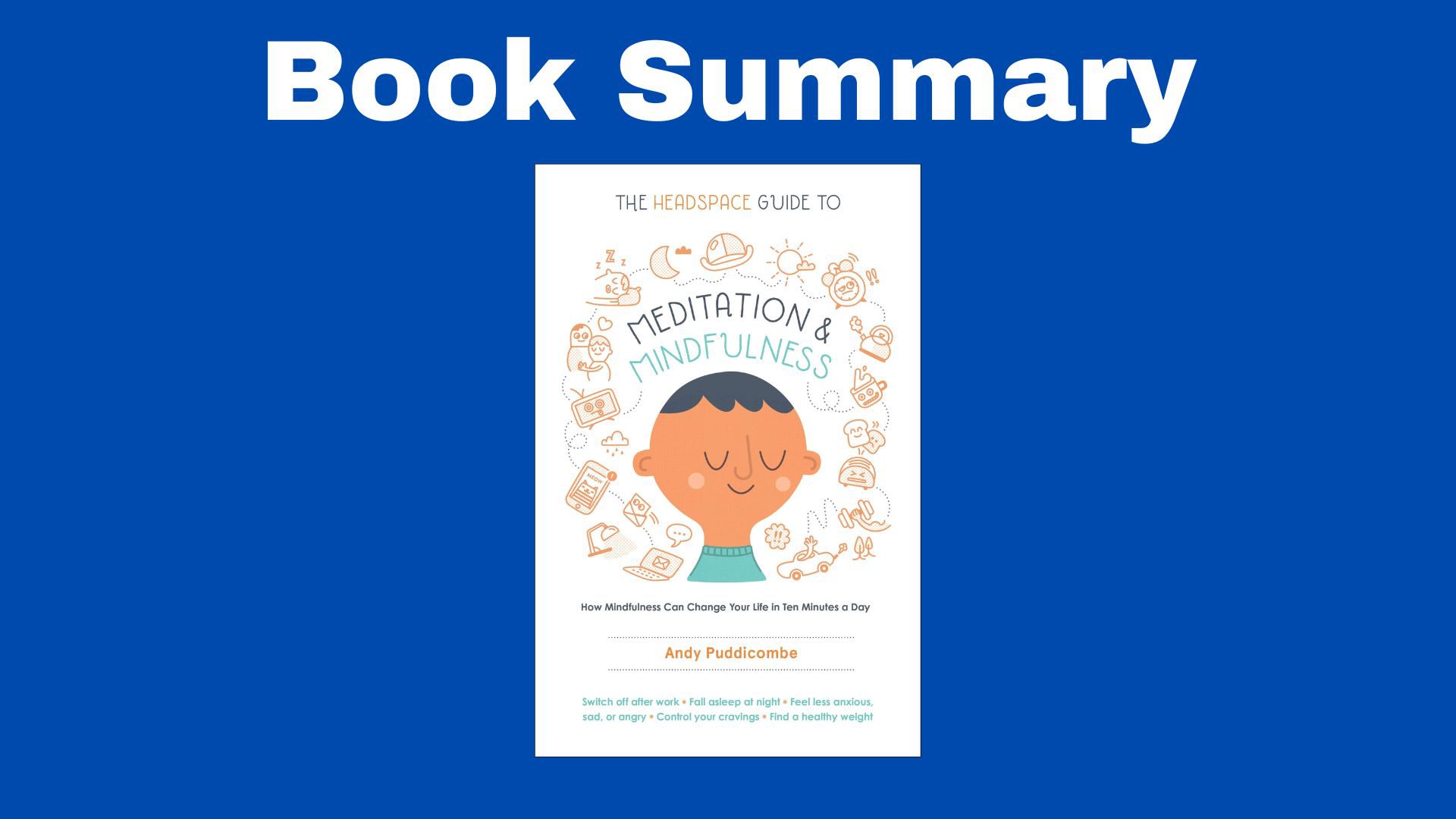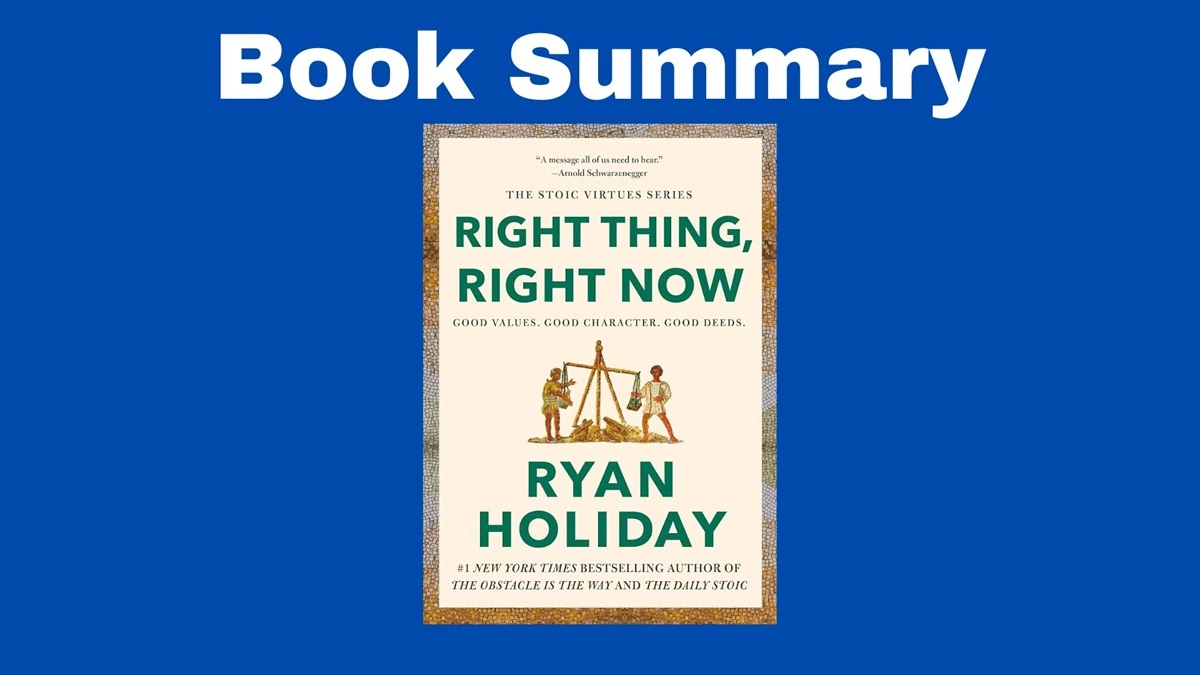The Book in Three Sentences
Written by Andy Puddicombe, the founder of Headspace, The Headspace Guide to Meditation and Mindfulness is a great introduction to the topic. Meditating ten minutes a day can improve your health, relationships, and overall happiness and this is an accessible and practical guide that teaches you to do it. By reading this book, you can learn a new tool that you can use daily.
The Headspace Guide to Meditation and Mindfulness Summary
Introduction
Andy Puddicombe trained as a Buddhist monk after studying Sports Science. At the time, everyone told him he was making a mistake, but this ended up being one of Puddicombe’s best decisions. The author was inspired to do it because his mind was turned on all the time and he was often worried, frustrated, or sad. When he was younger, Puddicombe dabbled in meditation and it helped him, but he felt frustrated when he didn’t get consistent results.
Eventually, he gave up and couldn’t find the time to meditate, but a series of tragic events made the practice relevant to him when he was a teenager. He tried pushing his feelings down, but this created even more tension. Buddhism appealed to him, as well as the idea of mastering the mind. According to the author, most people are interested in the benefits of meditation, but they are put off by the religious elements behind it.
Meditation is about how to approach, practice, and integrate its techniques into daily life. In 2010, Puddicombe launched Headspace to share meditation techniques with others, as well as teach everything he learned in monasteries, retreats, and meditation centers. You can meditate for different purposes: you can use it to be present, you can use it to get emotional stability, you can use it to be in touch with something spiritual, or simply to improve relationships or your professional life. Meditation is both a skill and an experience, so to better understand it, you have to try it for yourself. The author suggests the Headspace app as a companion to the book.
As part of the introduction, Andy Puddicombe makes a distinction between some important concepts. Mindfulness involves being in the present moment and without any distractions. Meditation is about quality, not quantity and ten minutes a day are more than enough, so this is the amount of time most people should start meditating. When done consistently, meditating can give you clarity and focus. Finally, the author defines headspace as the outcome of meditation.
Most people aren’t used to doing anything (this involves not engaging in the thought process either) and when they try it, they have a strong desire to do something. We’re used to living life moving from one distraction to the next. By always thinking about something, your ability to focus is negatively impacted. The ubiquity of technology has definitely affected our attention too and it’s easier than ever to be distracted by phones, social media, and emails. Technology can be overwhelming, but despite what some people think, there’s no need to give up technology when you start meditating.
Meditation is part of a broader system to train the mind: first, you have to determine how to approach the technique, then, how to practice it, and finally, how to integrate it into your day-to-day life.
The Approach
A common misconception related to meditation is that by doing it, you stop thoughts or feelings from entering your “bubble”. In a way, meditating is like being at the side of the road with your eyes closed. You hear a lot of background noise which makes it hard to concentrate, but by meditating, you’re aware of the noise. When you meditate, you see your mind in a confused state and your impulse is to take action. But trying to control your chaotic mind is not the solution, so what you should do instead is watch the chaos unfold. By meditating, you become a mere observer, and over time, sitting by the side of the road will be easier and easier.
Meditation is about giving up control and learning to focus in a more positive manner and be in a state of awareness. Meditating isn’t about doing, it’s about not doing. Also, it’s about letting your mind relax to find headspace.
Meditation isn’t about creating a contrived state of mind. Metaphorically speaking, meditating i about sitting in a chair outside and watching all the clouds go by, never forgetting that regardless of how many clouds you see, the sky is always blue underneath. When you meditate, you should take things slowly and gently. If you struggle, you repeat this until you feel happy, confident, and relaxed. If you resist bad thoughts, the situation will get worse, and getting rid of bad thoughts is resisting them too. Once you accept them, your mind will be at peace.
Meditation isn’t about being happy. Emotions are not the problem, the problem is how you react to them. Your emotions cloud how you perceive the world around you. Traits are emotions that define your character. States are fleeting emotions that happen on a regular basis.
Once again, the author clarifies some core concepts. Mindfulness is about resting in a state of awareness without judging emotions. Meditating is an exercise to practice mindfulness as those emotions come up. Headspace is the result, it’s about being in a state of mind where you accept those emotions. Never forget that feelings are neutral which means that they are neither good nor bad. When you meditate, try to keep a gentle curiosity. Be open-minded, don’t judge, don’t engage with thoughts and emotions, and don’t be scared by them either, simply be aware of them.
The Practice
There are thousands of ways of meditating, but regardless of which one you choose, the idea is always to focus, relax, and be aware. Meditation relies on concentration and clarity. To concentrate, meditation uses “objects of meditation” or “meditation supports”: they can be external (listening to a sound or chanting a word) or internal (focusing on your breath or visualizing a mental image). The good thing about focusing on your breath is that it’s always available.
As long as you’re aware, you’re meditating. Being aware involves noticing you’re having thoughts, so as long as you’re not engaging with them and observing the mind, that’s fine. Awareness is always there, just make sure you don’t forget it. We’re used to doing something just so that we don’t have to be bored.
To meditate, you need to know two things: how to observe your mind and to start slowly. To meditate, you have to rest in the present moment, not wait until it’s all over because that would be looking into the future.
The Integration
There are different postures for meditating: sitting down, cross-legged, laying down, or even walking. They’re not about providing choice but about teaching you mindfulness in different situations. You can use mundane tasks, such as drinking a glass of water or brushing your teeth to be aware of your movement, the sensations of your body, and so on. If your mind drifts, you bring attention back to those feelings. With practice, you’ll be present and calm, and you’ll get a sense of clarity.
It’s possible to train your mind even when you’re not meditating. There’s always a chance to be aware. Meditating is a practice that brings mindfulness into your life. By meditating often, you should consider giving your full attention to all the things that you do instead of thinking of something else. Move with purpose, focus, and awareness.
Don’t live your life thinking about past mistakes or your plans for the future. Be aware of what’s happening right here, right now. Meditation is great, but mindfulness should be part of your everyday life and there are techniques to practice mindfulness when you’re eating, walking, exercising, and sleeping.
Practicalities: Getting Started
To get the benefits of meditation, you have to do it often. Here are some additional guidelines:
- Find the right place where you can sit undisturbed for ten minutes
- Wear something comfortable
- Sit in a comfortable chair
- Find the right time and try to meditate as soon as you get up
- Measure time with a timer, but choose one that has a gentle tone
- Repetition is important
- Trust your experience
- If you feel uncomfortable or agitated, be aware of it and keep meditating
- Record your experience




